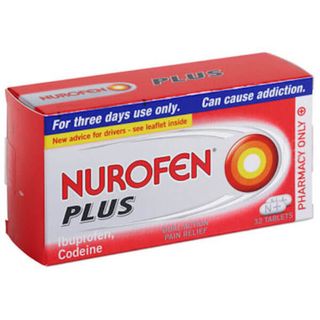
Pain
‘Pain’ covers a vast array of feelings, from mild discomfort to agony. Often the word doesn’t do justice to the complex range of sensations you might be experiencing. Normally the result of illness or injury, pain can strike in any part of your body. Living with pain, whether temporary or long term, can be really tough and it can have a real impact on your daily life. Non-prescription painkillers are great for easing pain caused by headaches, periods, colds, flu and other common ailments. If your pain is more severe, our friendly team can talk you through the stronger, prescription-only options available.
Pain Treatments
- Best seller
 Nurofen Plus Tablets£5.00283 reviews
Nurofen Plus Tablets£5.00283 reviews - Best seller

Paracetamol
Paracetamolfrom£0.52398 reviews 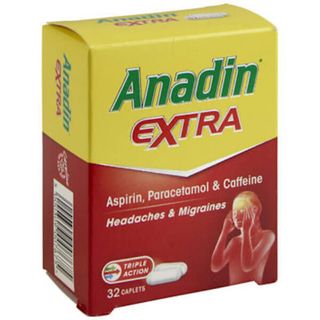
Anadin Extra Tablets
Anadin Extra Tablets£3.75100 reviews- Best seller
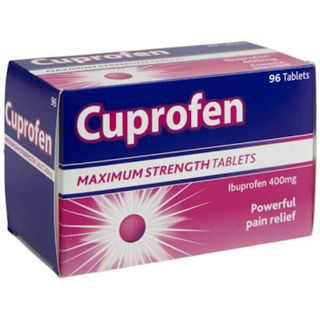
Cuprofen
Cuprofen£6.99345 reviews - Best seller
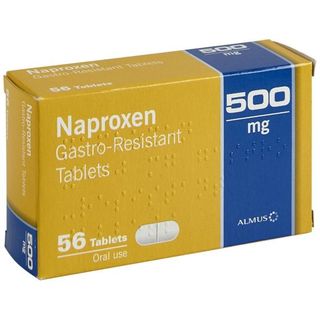
Naproxen Gastro-Resistant Tablets
Naproxen Gastro-Resistant Tablets (250mg & 500mg)from£18.95506 reviews - Best seller

Solpadeine Max
Solpadeine Maxfrom£6.85863 reviews 
Paramol Tablets
Paramol Tablets£6.49282 reviews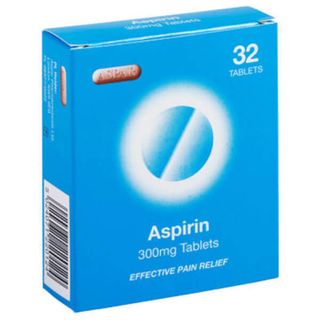
Aspirin
Aspirin 300mg Tablets & Dispersible Tabletsfrom£0.3942 reviews
Migraleve Pink Tablets
Migraleve Pink Tablets£7.79189 reviews
Solpadeine Plus Soluble Tablets (24)
Solpadeine Plus Soluble Tablets (24)£5.49421 reviews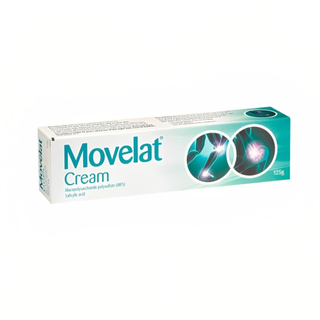
Movelat Cream
Movelat Cream£11.2921 reviews
Veganin Tablets
Veganin Tablets£4.3957 reviews
Ibuprofen Gel
Ibuprofen Gel (5% & 10%)from£3.9960 reviews
Ibuleve Gel
Ibuleve Gel (10%)from£5.5930 reviews
Naprosyn
Naprosyn 250mg & 500mg EC Tabletsfrom£23.959 reviews- Out Of Stock
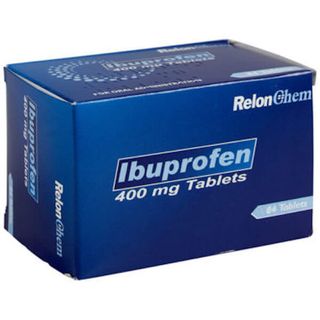
Ibuprofen 400mg Tablets
Ibuprofen 400mg Tablets£5.60228 reviews - Out Of Stock
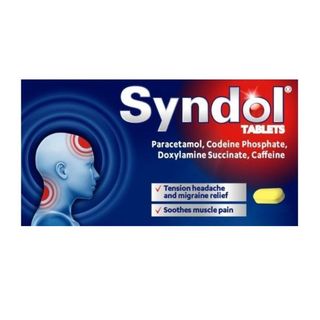
Syndol Tablets
Syndol286 reviews - Out Of Stock

Vimovo
Vimovo MR Tablets62 reviews - Out Of Stock

Biofreeze Gel
Biofreeze Gel - Out Of Stock
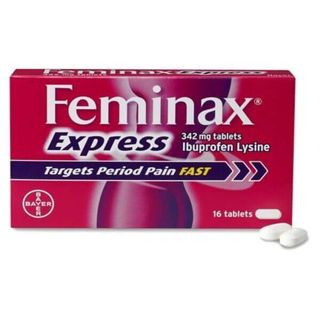
Feminax Express
Feminax Express - Out Of Stock
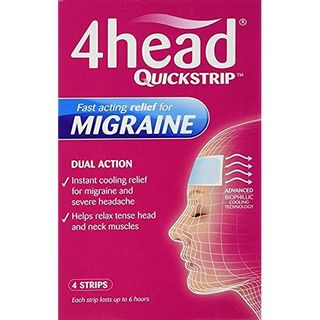
4head QuickStrip
4head QuickStrip - Out Of Stock
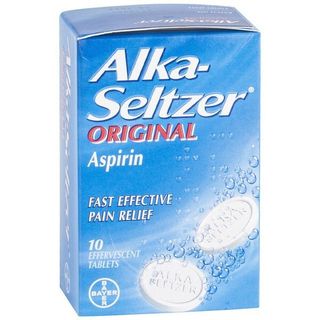
Alka-Seltzer
Alka-Seltzer Original - Out Of Stock
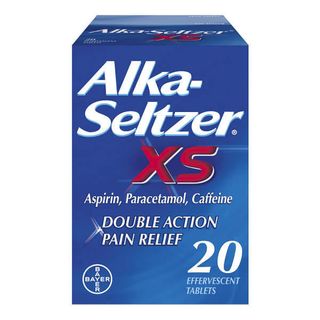
Alka-Seltzer XS
Alka-Seltzer XS - Out Of Stock

4head Stick
4head Stick - Out Of Stock
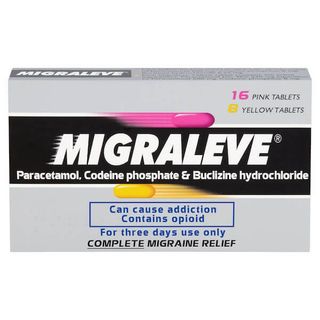
Migraleve Complete
Migraleve Complete Tablets - Out Of Stock

Codasolve Effervescent Tablets
Codasolve Effervescent Tablets - Out Of Stock
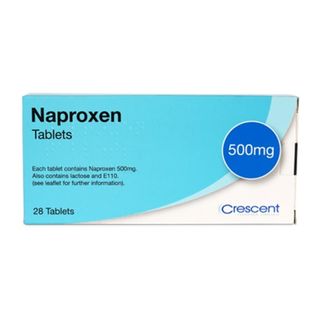
Naproxen 250mg & 500mg Tablets
Naproxen 250mg & 500mg Tablets - Out Of Stock

Piroxicam Gel
Piroxicam 0.5% Gel (Generic Feldene) - Out Of Stock

Movelat Gel
Movelat Gel - Out Of Stock

Beechams Max Strength All In One Capsules
Beechams Max Strength All In One Capsules - Out Of Stock

Beechams All in One Cold and Flu Tablets
Beechams All in One Cold and Flu Tablets - Out Of Stock

Beechams All In One Liquid
Beechams All In One Liquid - Out Of Stock

Beechams Powders Sachets
Beechams Powders Sachets - Out Of Stock
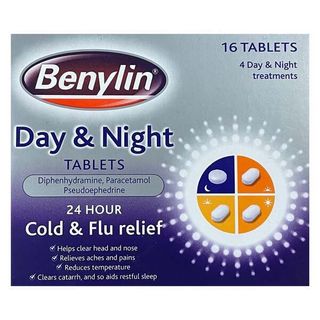
Benylin Day & Night Tablets
Benylin Day & Night Tablets - Out Of Stock

Nurofen Meltlets Lemon
Nurofen Meltlets Lemon - Out Of Stock
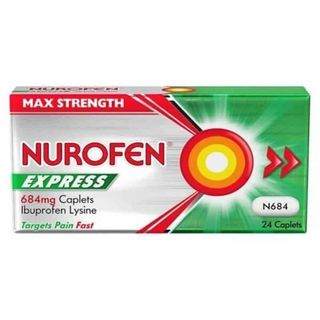
Nurofen Express Caplets
Nurofen Express Caplets - Out Of Stock

Lemsip Max Cold and Flu Relief Sachets
Lemsip Max Cold and Flu Relief Sachets - Out Of Stock
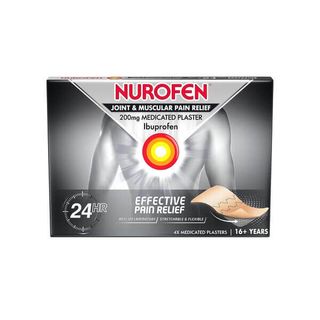
Nurofen Joint & Muscular Pain Relief Plaster
Nurofen Joint & Muscular Pain Relief Plaster - Out Of Stock
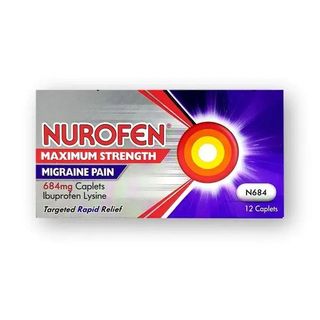
Nurofen Maximum Strength Migraine Pain Caplets
Nurofen Maximum Strength Migraine Pain Caplets - Out Of Stock

Nurofen for Children 100mg Chewable Capsules Orange
Nurofen for Children 100mg Chewable Capsules Orange - Out Of Stock
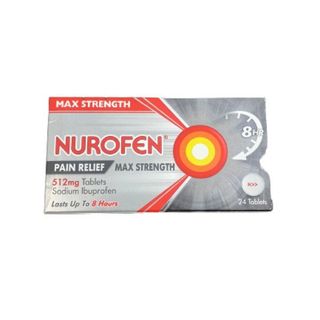
Nurofen Pain Relief Max Strength Tablets
Nurofen Pain Relief Max Strength Tablets - Out Of Stock
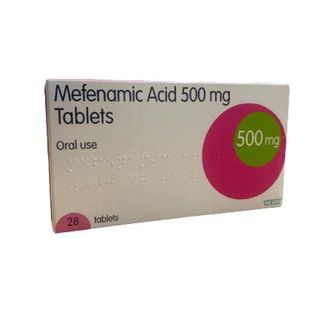
Mefenamic Acid 500mg Tablets
Mefenamic Acid 500mg Tablets - Out Of Stock
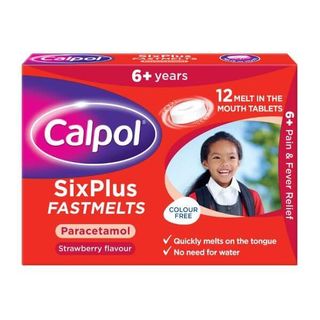
Calpol SixPlus Fastmelts
Calpol SixPlus Fastmelts - Out Of Stock
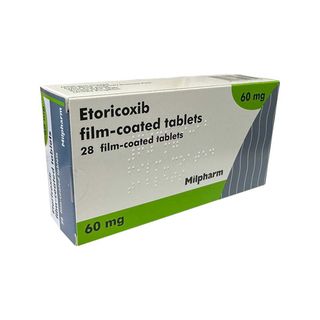
Etoricoxib 60mg Tablets
Etoricoxib 60mg Tablets - Out Of Stock
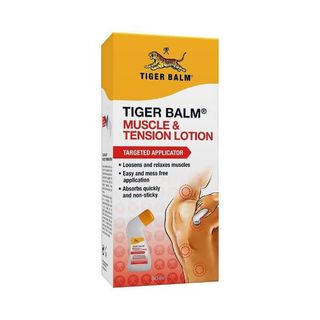
Tiger Balm Muscle Lotion
Tiger Balm Muscle Lotion - Out Of Stock

Tiger Balm Red Ointment
Tiger Balm Red Ointment - Out Of Stock
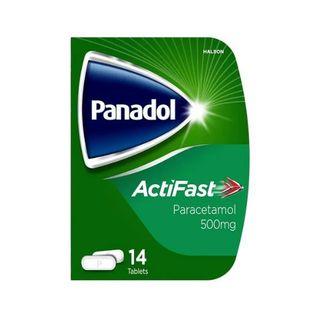
Panadol ActiFast
Panadol ActiFast - Out Of Stock
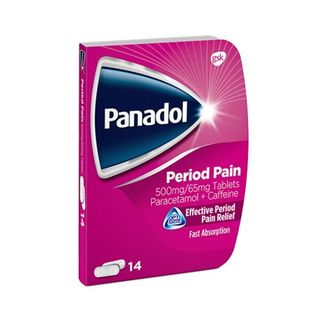
Panadol Period Pain Tablets (14)
Panadol Period Pain Tablets (14) - Out Of Stock

Solpadeine Headache Soluble Tablets (16)
Solpadeine Headache Soluble Tablets (16) - Out Of Stock

Deep Heat Rub - 35g tube
Deep Heat Rub - 35g tube - Out Of Stock

Deep Heat Max Strength - 35g
Deep Heat Max Strength - 35g tube - Out Of Stock
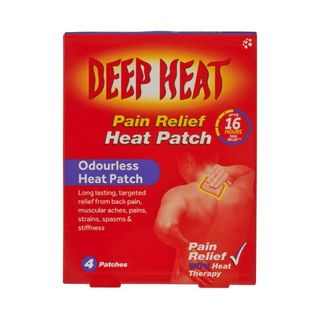
Deep Heat Pain Relief Heat Patch
Deep Heat Pain Relief Heat Patch - Out Of Stock

Solpadeine Plus Capsules (32)
Solpadeine Plus Capsules (32) - Out Of Stock
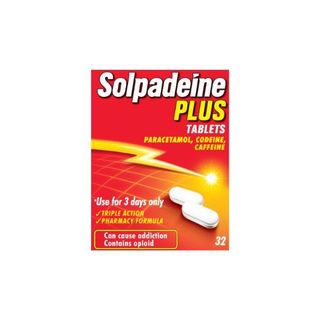
Solpadeine Plus Tablets (32)
Solpadeine Plus Tablets (32) - Out Of Stock

Tiger Balm Red Ointment 19g
Tiger Balm Red Ointment 19g - Out Of Stock
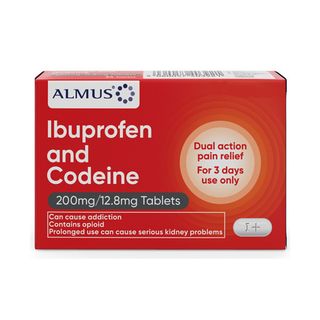
Ibuprofen and Codeine 200mg/12.8mg Tablets
Ibuprofen and Codeine 200mg/12.8mg Tablets - Out Of Stock

SolpaOne 1000mg Effervescent Tablets
SolpaOne 1000mg Effervescent Tablets - Out Of Stock
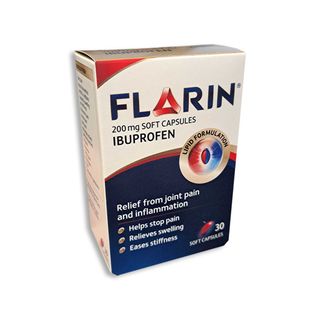
Flarin Capsules
Flarin 200mg Ibuprofen Soft Capsules - Out Of Stock
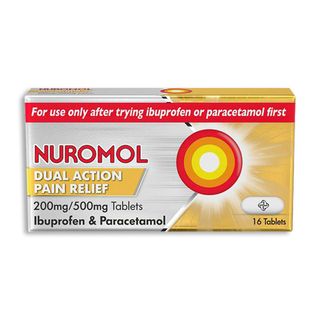
Nuromol Dual Action Pain Relief Tablets
Nuromol Dual Action Pain Relief Tablets - Out Of Stock
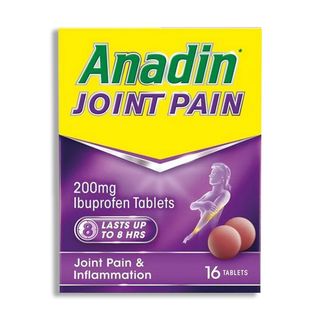
Anadin Joint Pain 200mg Ibuprofen Tablets
Anadin Joint Pain 200mg Ibuprofen Tablets - Out Of Stock

Hedex Extra Tablets
Hedex Extra Tablets - Out Of Stock

Panadol Extra Advance Tablets
Panadol Extra Advance Tablets - Out Of Stock
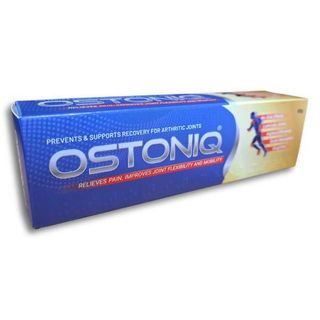
Ostoniq Joint Pain Relief Cream
Ostoniq Joint Pain Relief Cream - Out Of Stock

Flexiseq Active Gel
Flexiseq Active Gel - Out Of Stock

Voltarol Emulgel
Voltarol 1.16% Emulgel - Out Of Stock
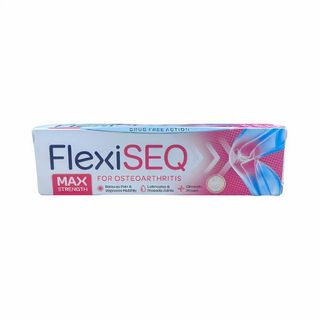
Flexiseq Osteo Gel
Flexiseq Max Strength Osteo Gel - Out Of Stock
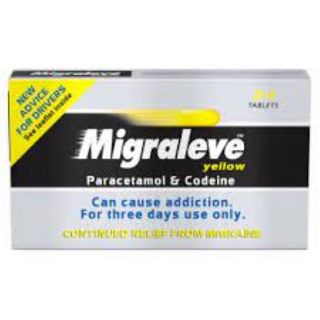
Migraleve Yellow
Migraleve Yellow Tablets
Start your assessment for Pain
Don't wait to get the medical help you need.
Once you complete a short online assessment about your condition, you will be able to select your preferred treatment and quantity from a list of appropriate options for you.
Reviewed by our UK-based medical team
Takes less than 3 minutes to complete
Approved treatments dispatched same day (before 3pm)
Ordering as easy as 1, 2, 3
1. Find the ideal treatment
We can provide over 1099 leading medicines to treat over 94 conditions.
2. Get a free consultation
Our qualified healthcare professionals will assess your condition and needs.
3. Enjoy speedy delivery
And when the time comes to re-order, it'll only take a couple of clicks.
Advice for Pain
What is Pain & what causes it?
The sensation of pain is triggered by the nervous system, usually in response to an injury or illness. The pain sensation hurts, causing discomfort, distress and perhaps agony, depending on its severity.
Pain can be felt in a variety of forms; it can be dull and constant, or short and sharp. Pain may be experienced in one area of the body, such as the back or abdomen, or it can be felt all over, like when your muscles ache during the flu. Pain can be very useful for helping to diagnose a problem. Without pain, trauma may occur without someone even realising it. Alternatively, a medical condition may remain hidden without the associated pain to help identify it. Once the instigating injury or illness has been treated, the pain will usually subside. In these instances, the pain can be classified as being acute.
However, sometimes pain can continue for weeks, months or even years. This is known as chronic pain. Chronic pain can be the result of a long-term condition, such as arthritis or cancer. In other cases, the cause can remain unknown. The most common types of pain include:
- Back pain – most cases of back pain aren't caused by anything too serious. In most cases, back pain is caused by minor sprains or injuries. These injuries can be incurred by bending or twisting awkwardly, lifting heavy objects, over-stretching, slouching or hunching, and overusing muscles. Some cases of back pain can be the result of a more serious medical condition, such as sciatica, arthritis or a slipped or prolapsed disc. On rare occasions, back pain can be the sign of something more serious, such as a spinal fracture or cancer.
- Headache – headaches can be divided into two categories; primary and secondary. Primary headaches are, in most cases, caused by a dysfunction or an over activity in the pain- sensitive structures in the head. Examples of primary headaches include; migraine, tension headache and cluster headaches. Secondary headaches are a symptom of another condition that stimulates the pain-sensitive nerves in the head. An example of a secondary headache is an alcohol-induced hangover.
- Joint pain – is the result of damage to the joints, either through disease or injury. A variety of conditions can lead to joint pain, including; osteoarthritis, rheumatoid arthritis, gout, bursitis, sprains, strains and other injuries.
- Period pain – is the result of muscular contractions of the womb. These contractions constantly pass through the womb, however, they are usually so mild that they pass unnoticed. During menstruation, these contractions can become more vigorous. This is to encourage the wombs lining to shed away as part of the monthly cycle. These more intense contractions can compress the blood vessels in the womb, temporarily cutting off the blood supply. Without blood, the tissues in the womb become deprived of oxygen, which causes them to release chemicals that trigger pain in the body.
- Muscular pain – also known as myalgia, is often the result of too much stress, tension, or physical activity. However, in some cases, myalgia can be related to a medical condition, such as; viral or bacterial infections, fibromyalgia, thyroid problems, hypokalaemia (low potassium), autoimmune disorders, and certain medicines, such as ACE inhibitors.
- Dental pain – toothache is usually the result of the tooth's innermost layer becoming inflamed. This layer is known as the dental pulp and is made up of sensitive nerves and blood vessels. The dental pulp can become inflamed as a result of; tooth decay, receding gums, a cracked tooth, loose or broken fillings, and a periapical abscess. Other conditions that can cause dental pain, without the dental pulp being affected, include; sore and swollen gums, sinusitis, ulcers, periodontal abscess, and injury to the temporomandibular joint, which connects the jaw to the skull. Babies can always experience dental pain when their teeth begin to develop. This is called teething.
Pain can be further classified as being; nociceptive, non-nociceptive, somatic, neuropathic, sympathetic, visceral, and referred.
Nociceptive pain occurs when specific pain receptors are stimulated. These receptors sense vibrations, temperature, inflammation, stretching and the chemicals released by damaged cells.
Non-nociceptive pain isn't caused by specific pain receptors. Instead, it is a response to a nerve(s) becoming injured or unstable, causing its signalling system to become confused. The brain (central nervous system) interprets these abnormal signals as pain.
Somatic pain is a type of nociceptive pain that is experienced on the skin, or in the muscles, joints, ligaments and bones. Somatic pain tends to be sharp and localised at the cause.
Neuropathic pain is a type of non-nociceptive pain. It occurs inside the nervous system itself and is often referred to as a trapped or pinched nerve. This type of pain originates from the peripheral or central nervous system. Causes of neuropathic pain include; nerve degeneration, nerve inflammation, pressure on the nerves or nerve infection.
Sympathetic pain (non-nociceptive) occurs in the sympathetic nervous system. This system controls blood flow, perspiration and the speed at which the peripheral nervous system works. Sympathetic pain usually occurs after bone fractures or soft tissue damage. As with neuropathic pain, sympathetic pain is the result of a nerve becoming injured or unstable, causing it to send abnormal signals to the brain, which then interprets them as pain.
Visceral pain is a type of nociceptive pain. It is usually experienced in the internal organs and main body cavities, such as the thorax, abdomen and pelvis. Visceral pain is harder to localise compared with somatic pain. The sensation will usually resemble a deep ache or cramping.
Visceral pain commonly refers to some type of back pain: Upper back = thoracic, mid-back = abdominal, and lower back = pelvic.
Referred pain is sometimes called reflective pain. This form of pain is experienced next to, or at a distance from the origin of the injury. For example, a person suffering a heart attack may feel pain around the shoulders, back or neck, instead of the chest. The origin and causes of referred pain are still unknown.
How is Pain diagnosed?
Effectively managing pain will start with a comprehensive pain assessment. This assessment will allow the doctor or healthcare provider to characterise the pain, assess its impact, and evaluate other associated aspects, such as medical or psychological issues. This initial assessment will determine whether an additional evaluation is required to fully understand the pain.
Pain is very subjective, meaning only the sufferer can describe it adequately. The healthcare provider will ask about the pains location and duration. They will then seek to identify the quality and severity of the pain, as well as what factors make the pain better or worse.
The next step will be to assess the changes that have occurred in the sufferers life as a consequence of the pain. This assessment will require a physical examination, coupled with a review of the patients medical records.
Part of the pain assessment will require discussing all previously tried pain-relief treatments. The doctor or healthcare provider will enquire as to what medicines and conventional treatments have been tried in the past. If the sufferer has been using complementary or alternative treatments, these are also important to discuss. These alternative treatments may include; acupuncture, massage therapy, herbal and nutritional therapies, yoga and chiropractic care.
By providing relevant, comprehensive data, the doctor or healthcare provider can better understand the nature of the pain and the potential benefits from specific treatments. The goals of a comprehensive pain assessment are to:
- Gain a full description of the pain.
- Assess whether the description fits any well-known pain syndrome.
- Determine whether the pain is the result of a structural disease if the body.
- Attempt to determine the mechanism perpetuating the pain. For example, tissue damage, nerve injury or psychological processes that may be maintaining the pain.
- Obtain a full description of the negative effects on the sufferers physical and psychological functioning caused by the pain.
- Determine whether any medical or psychiatric problems coexist with the pain and whether these will require simultaneous treatment.
What treatments are available for Pain?
If the pain is being caused by an underlying disorder, treating said disorder will also relieve the associated pain. For example, if suffering from a bacterial infection, taking the appropriate course of antibiotics should clear up the infection, which should result in the elimination of the associated pain. If the pain is moderate to severe, it may also be necessary to use analgesics (painkillers), until the underlying cause has been treated.
Analgesics are effective at relieving nociceptive pain but aren't effective at combating neuropathic pain.
Opioid Analgesics
If suffering from a mild headache or a muscle strain, an over-the-counter pain reliever will usually be enough to ease the pain. However, if the pain is more severe, the doctor may recommend something a lot stronger, such as an opioid analgesic.
Opioid analgesics are the strongest painkillers, which are only available with a valid prescription. They are commonly used after surgery, for broken bones, burns, cancer, and under various other circumstances where the pain is likely to be severe. Opioid analgesics work by binding to the opioid receptors in the brain and spinal cord. This causes a reduction in the pain messages being sent to the brain, thus reducing the feelings of pain. An opioid will usually be administered in gradually increasing dosages. The aim of this method of administration is to achieve the ideal dose, which is when the pain is sufficiently relieved, whilst the side-effects remain tolerable. By taking too high a dose, the side-effects can become too much for the sufferer. Opioid dosages are generally much lower for infants and the elderly.
The most common side-effects that opioid analgesics produced include;
- Nausea/vomiting
- Drowsiness
- Constipation
- Itching
Usually, these side-effects lessen with time. Opioid analgesics should always be taken with great care, as taking too much can be dangerous. Opioids can also cause addiction - patients who use opioids frequently over long periods, can find themselves dependent on them. For these patients, if treatment were suddenly stopped, they would suffer withdrawal symptoms, which makes it important that their dosage is instead gradually tapered off. Examples of opioid analgesics include:
- Codeine
- Fentanyl
- Hydrocodone
- Hydromorphone
- Morphine
- Methadone
- Oxycodone
- Meperidine
Non-opioid Analgesics
Non-opioid analgesics are generally used to treat mild to moderate pain. Unlike opioid analgesics, they are not addictive and their pain-relieving effects do not dwindle with repeated use.
Paracetamol
Paracetamol is classed as a mild analgesic. It is typically recommended as the first line of treatment for pain, as it is safe for most people to take and side-effects are rare. It is commonly used to treat mild to moderate pain, such as headaches, toothache, strains and sprains. Paracetamol is also an effective means of reducing fevers caused by viral infections, such as colds and flu. Paracetamol usually starts to work within an hour, with the effects lasting on average for several hours. Do not exceed the recommended dose if it isn't relieving your symptoms. Paracetamols mechanism of action is still not fully understood. It is thought to work by blocking specific enzymes found in the central nervous system, which in turn, dampen the sensations of pain. Paracetamol is produced by multiple manufacturers in a wide variety of forms, including:
- Tablets or caplets
- Capsules
- Effervescent tablets
- Liquids
- Sachets
- Suppositories
- Injections
Unlike other pain-relief medication, paracetamol is considered safe to take during pregnancy and breastfeeding. If you are not sure whether paracetamol is safe for you, check with your doctor or pharmacist first – especially if:
- You suffer from any form of liver or kidney problem.
- You have issues with alcohol, such as long-term misuse.
- You are classed as very underweight.
- You have had an allergic reaction to paracetamol in the past.
- You are taking other medications, which could potentially interact with paracetamol
Side-effects associated with paracetamol are quite rare but can include:
- An allergic reaction, which can lead to rashes or swellings.
- Low blood pressure, flushing and a fast heart rate. This side-effect usually only happens when paracetamol is administered intravenously in a hospital.
- Liver and kidney damage.
- Blood disorders, such as Thrombocytopenia and Leukopenia.
It is always advised to speak to your doctor or pharmacist should you develop any troublesome side-effects as a result of taking paracetamol.
Nonsteroidal anti-inflammatory drugs (NSAIDs)
These medicines can be obtained over-the-counter or as a prescription medicine, depending on the strength and dosage. NSAIDs are one of the most common pain-relieving medicines in the world. Low NSAID doses are effective for treating minor ailments, such as muscle aches, headaches, fever, minor strains and other daily discomforts. Higher doses of NSAIDs will help to relieve more moderate pain, such as joint inflammation. NSAIDs work on the chemical level by blocking the effects of certain enzymes, specifically the Cox-1 & Cox-2 enzymes. These enzymes play an important role in the production of prostaglandins, which are chemicals like hormones. When the body is injured, the damaged tissue releases prostaglandins, which amplify the pain signals from the nerves, as well as causing the damaged tissue to swell. By blocking the enzymes that produce prostaglandins, NSAIDs will effectively reduce the swelling and decrease the sensations of pain.
Ibuprofen– is manufactured by many different companies and is available in a variety of forms, including; tablets, gels, sprays and liquids. In some products, Ibuprofen is combined with other active ingredients, such as a decongestant, and sold as a cold & flu remedy. Examples of pain relief treatments containing ibuprofen include:
- Ibuprofen (generic) – this is available as tablets, caplets, gel, and liquids.
- Nurofen – probably the most recognised brand of Ibuprofen in The UK. Nurofen is available in a plethora of formulations including; tablets, liquid tablets, caplets, meltlets, liquids, patches, gels and sachets.
- Cuprofen – available in tablets and gels
- Ibuleve – available in gels, sprays, and patches
- Brufen retard (prescription only strength)
Aspirin – belongs to the group of NSAIDs known as Salicylates. It is available in many forms and has a number of other uses besides pain relief. It can also be used to help reduce the risk of heart attacks and strokes.
Some types of Aspirin can be bought over-the-counter, while others are only available on prescription. Aspirin that can be bought over-the-counter include:
- Aspirin (generic) – available in tablets and soluble tablets.
- Anadin – available in tablet form
- Dispirin – available as a soluble tablet and as a fast-tab (melts on the tongue).
Diclofenac – is used to treat mild to moderate pain, including the signs and symptoms of osteoarthritis and rheumatoid arthritis. Diclofenac can be bought as a topical gel (Voltarol), over- the-counter, or as an oral tablet with a valid prescription.
Naproxen – is usually used to treat pain and inflammation caused by conditions like; arthritis, tendinitis, bursitis, ankylosing spondylitis, gout and period pain. Naproxen is available in immediate, slow, or extended-release formulas. For chronic pain conditions, such as arthritis, the slow or extended release would be the preferred choice, as this form will not work fast enough to treat acute pain. Examples of Naproxen based products include; Naprosyn Tablets (prescription-only-medicine), Vimovo modified-release tablets and Feminax Ultra (over-the-counter pharmacy medicine).
Other examples of NSAIDs include:
- Celecoxib
- Mefenamic Acid
- Etoricoxib
- Indomethacin
NSAIDs can be taken by most people, however, there are some who will need to be careful about taking them. It is recommended to ask your pharmacist or doctor for advice if:
- You are either pregnant, breastfeeding, or trying to conceive.
- You are over 65 years of age.
- You suffer from asthma.
- You have suffered an allergic reaction to NSAIDs in the past.
- You have suffered from a stomach ulcer.
- You have problems with your heart, kidneys, liver, blood pressure, circulation, or bowels.
- You are currently taking medicines that could potentially interact with NSAIDs.
- You are looking to treat a child under the age of 16 years.
Under these circumstances, NSAIDs may not always need to be avoided. However, they should only be used on the advice of a healthcare professional. If deemed inappropriate, your doctor or pharmacist may recommend an alternative method of pain relief, such as paracetamol.
Like all medicines, NSAIDs carry a risk of side-effects. These will tend to be more common if you are taking higher doses for long periods of time, or if you are elderly or in poor physical health. The strengths and formulations of over-the-counter NSAIDs are generally better tolerated than the stronger prescription-only medicines. The most common side-effects associated with NSAIDs include:
- Indigestion
- Stomach aches
- Diarrhoea
- Stomach ulcers
- Headaches
- Drowsiness
- Dizziness
- Allergic reaction
Anticonvulsants used to treat chronic pain
Anticonvulsants are a group of medicines used to treat seizure disorders, but can, in some cases, be used for pain-relief. This is because anticonvulsants will also act as an adjuvant analgesic, which means it can inhibit certain types of nerve transmissions. This action will lead to a reduction of neuropathic pain sensations, such as those caused by diabetic neuropathy or trigeminal neuralgia. Examples of anticonvulsants commonly used as pain relief include:
- Gabapentin (Neurontin)
- Pregabalin (Lyrica)
- Carbamazepine (Tegretol)
- Lamotrigine (Lamictal)
- Phenytoin Valproate
Anticonvulsants are only available with a valid prescription.
Antidepressants for chronic pain
Antidepressants can also act as an adjuvant analgesics. Although they aren't specifically formulated as a pain relief medication, they have proven effective at treating certain types of chronic pain. Antidepressants are believed to control chronic pain in two ways. Firstly, they alter the manner in which pain is perceived from the spinal cord to the brain. Secondly, they help to reduce anxiety, which will help to improve and regulate sleep. Antidepressants can be prescribed for pain relief, either in conjunction with other analgesics or on their own. Adjuvant analgesics, like antidepressants, tend to be less effective in treating musculoskeletal pain, such as joint or back pain. However, they have proven effective at treating neuropathic pain and chronic headaches, such as tension headaches or migraines. Examples of antidepressants commonly used as pain relief:
- Amitriptyline
- Citalopram
- Fluoxetine
- Paroxetine
- Venlafaxine
- Nortriptyline
- Fluvoxamine
- Duloxetine
Antidepressants are only available with a valid prescription.
Nerve Blocks
Nerve blocks are typically used to help treat neuropathic pain. There are groups of nerves, called a plexus or ganglion, which can often cause pain to specific regions of the body. These nerves can be blocked by injecting medicine directly into the affected area, numbing the nerves and blocking the pain signals sent to the central nervous system. Nerve blocks can be used for various purposes, including:
- Therapeutic nerve blocks – containing a local anaesthetic. These nerve blocks are typically used to relieve acute pain.
- Diagnostic nerve blocks – these nerve blocks are designed to identify the sources of pain.
- Prognostic nerve blocks – are used to predict the effectiveness of given treatments. This type of nerve block is aimed at determining whether more permanent forms of treatment (such as surgery) would be more effective.
- Pre-emptive nerve blocks – this form of nerve block is designed to prevent subsequent pain, following a procedure that can cause problems.
- Sympathetic nerve block – this type of nerve block is performed to determine whether the sympathetic nerve chain has become damaged. This chain of nerves extends the full length of the spine and is responsible for controlling some of the bodys involuntary functions, such as blood vessel dilation.
- Stellate ganglion block – This is a form of sympathetic nerve block that assesses whether there is any damage to the nerve chain that supplies the head, neck, chest and arms, and whether this nerve damage is the source of the of the pain in those areas.
- Facet joint block – this is also referred to as a zygapophysial joint block. The facet joints are found on the back of the spine, at the points where the vertebrae overlap. These joints are responsible for guiding and restricting spinal movements. The facet joint nerve block will help determine whether one of these joints is the source of pain.
Transcutaneous Electrical Nerve Stimulation
Transcutaneous electrical nerve stimulation (TENS) is a method of relieving pain by using mild electrical currents. A TENS machine is usually a compact, battery-operated device, which has leads connected to adhesive electrodes. These electrodes are attached directly to the skin. The machine, when switched on, will deliver mild electrical impulses through these electrodes to the affected area(s) of the body. These electrical signals are designed to reduce the pain signals being sent to the spinal cord and brain, which should dull the pain sensations, as well as relaxing the surrounding muscles. TENS stimulation can also stimulate the production of endorphins, which act as the bodys natural painkillers. TENS machines are a popular method of pain relief that can be used on a wide variety of conditions, including:
- Back pain
- Neck pain
- Knee Pain
- Sports injuries
- Period pain
- Arthritis
It is worth noting that TENS does not cure pain. Using a TENS machine will only provide short-term relief whilst the device is being used. Also, TENS isn't suitable for everyone. It is important not to use a TENS machine without first seeking medical advice if:
- Your body contains a metal or an electrical implanted device, such as a pacemaker.
- You're pregnant, or could be pregnant.
- You are epileptic.
- You suffer from heart problems.
It is commonly accepted that more research is needed to ascertain whether TENS is a reliable method for providing pain-relief. If you are considering TENS treatment, it is recommended you speak to your doctor or pharmacist first.
For some people, complementary and alternative medicines may also prove helpful for neuropathic pain relief. These treatments can include acupuncture and herbal remedies. Most alternative medicine is available without a prescription, however, it is always advised to consult your doctor before starting any new treatments for neuropathic pain.
How can I prevent Pain?
Both acute and chronic pain cannot always be prevented. However, staying in good physical and mental health is probably the best method for staving off injury or illness, or at least helping to cope with it.
- Treat any health problems as early as possible.
- Ensure you get enough sleep every night.
- Alternate activity and rest throughout the day.
- Exercise regularly.
- Eat a balanced diet, rich in fresh fruit and vegetables.
- Maintain a healthy weight.
- Try to keep stress to a minimum.
- Keeping your back strong and supple will help prevent back pain -ensure you maintain a good posture, exercise regularly and lift correctly.
- Avoid dangerous situations that could potentially result in injury.
- Practice good oral hygiene (specifically relating to dental pain).
Alternatives
Non-prescription alternatives for the treatment of pain are;
- Ibuprofen
- Paracetamol
- Aspirin
- Topical Treatments (Ibuprofen gel)
- Rest the area
If your pain does not ease or becomes severe, contact your GP or Pharmacist for further advice.
vtest
vtest
Pain FAQs
Pain is a sensation triggered by the nervous system, usually as a response to an injury or illness. The pain sensation is unpleasant; it hurts and causes discomfort, and perhaps even agony.
Pain can be experienced in a variety of ways; from short and sharp, to dull and constant. Pain can serve a purpose - acting as a useful mechanism from which to diagnose health problems. Without pain, illnesses may go undetected, or injuries unnoticed.
Words that are commonly used to describe pain’s varying sensations include; stinging, burning, throbbing, shooting and aching.
- Acute pain is usually directly related to soft tissue damage, such as a cut or a strain. It is typically sharp in quality and acts as a warning of disease or injury to the body.As the injured tissue heals, the associated pain should gradually resolve. Acute pain can occur under a wide range of circumstances including:
- Cuts and bruises
- Burns
- Broken bones
- Surgery
- Labour and childbirth
Acute pain can be mild and brief, or alternatively, it can be severe and last for weeks. For example, the acute pain experienced from a shallow scratch will be mild and brief compared to the acute pain suffered from a broken bone, which will likely be more severe and long-term. In most cases, acute pain will not last beyond six months. Chronic pain describes the type of pain that persists long after the instigating injury or illness has healed.
In a lot of cases, chronic pain will have originated from a past trauma or infection. However, some sufferers experience chronic pain in the absence of previous physical injury or illness. Common examples of chronic pain include:
- Headache
- Back pain
- Arthritis pain
- Cancer pain
- Neurogenic pain (pain that is caused by nerve damage)
- Psychogenic pain (pain that isn’t related to previous injury or illness)
Chronic pain can cause a number of unpleasant physical effects including; tense muscles, lethargy, reduced mobility, and changes in appetite. Also, it can impact on a sufferer’s quality of life, which will likely result in a number of emotional effects too. These can include; depression, anxiety, and anger.
- The most commonly suffered types of pain include:
- Back pain – usually nothing too serious. Most cases of back pain are caused by twisting or bending awkwardly, overstretching, hunching, or lifting heavy objects. Other cases of back pain can be the result of a more serious medical condition, such as arthritis, a slipped disc or sciatica.
- Primary headaches – this type of headache is usually caused by dysfunction of the pain- sensitive structures in the head. Examples of primary headaches include; migraine, tension headache, and cluster headache.
- Secondary headaches – these are typically a symptom of another ailment, which stimulates the pain-sensitive nerves in the head. A hangover is a good example of a secondary headache.
- Muscle pain – can also be referred to as myalgia. This common source of pain will likely be caused by stress, tension or overexertion. Some cases of myalgia can be caused by certain medical conditions, including; fibromyalgia, hypokalemia, thyroid problems, and bacterial or viral infections.
- Joint pain – this type of pain occurs when the joints in the body become damaged, either through illness or injury. A variety of conditions can cause joint pain, including; osteoarthritis, rheumatoid arthritis, gout and bursitis.
- Period pain – is caused by contractions in the womb that occur during menstruation. During this point of a woman’s monthly cycle, the uterus contracts in order to encourage the wombs lining to shed. These contractions can compress the blood vessels in the womb, which temporarily cuts off their blood supply. Without blood, the womb can become deprived of oxygen, which triggers a chemical release that is interpreted by the brain as pain.
- Dental pain – is typically the result of inflammation of the tooth’s inner layer. This layer is referred to as the dental pulp, and it contains sensitive nerves and blood vessels. Tooth decay, receding gums, broken fillings, a cracked tooth, and a periapical abscess can all cause inflammation of the dental pulp. Other oral inflictions that can lead to dental pain include; swollen gums, sinusitis, mouth ulcers, and periodontal abscesses.
- Pain can be categorised into different groups. The details of each different class of pain is outlined below:
- Neuropathic pain (neuralgia) – is a type of pain that originates from within the nervous system. Neuropathic pain is usually the result of a problem with the signals being sent from the nerves to the brain. This type of pain can be caused by nerve damage, degeneration, or inflammation. It can also be caused by pressure on the nerve, or a nerve infection.
- Somatic pain – can sometimes be referred to as musculoskeletal pain. The nerves that trigger somatic pain are called nociceptors. They are found in the skin and deep tissues of the body and are sensitive to temperature, vibrations, and swellings in the skin, joints and muscles. A strained muscle or a cut on the skin are both examples of somatic pain.
- Visceral pain – this type of pain is felt in the internal organs and the main body cavities. Visceral pain is much harder to localise than somatic pain, with the sensation itself resembling a deep ache or a cramp.
- Sympathetic pain – like neuropathic pain, sympathetic pain occurs when a nerve becomes damaged or unstable. This results in abnormal signals being sent from the nerve, which the brain then interprets as pain. Sympathetic pain occurs in the sympathetic nervous system.
- Referred pain – this type of pain is experienced at a different site from the original injury. For example, someone who has undergone shoulder surgery may feel referred pain in the arm.
- Analgesics are medicines that are designed to relieve the symptoms of pain.Analgesics can be grouped into three main categories:
- Simple analgesics – such as Paracetamol
- NSAIDs - which include; Ibuprofen, Aspirin, Naproxen
- Opioid analgesics – which include Morphine, Pethidine, Oxycodone, Tramadol
Paracetamol is an analgesic (pain killer) and an antipyretic (temperature reducer). It relieves mild to moderate pain such as headaches, sprains, toothache and cold and flu symptoms and reduces fever. Paracetamol is sold under several brand names and is sometimes combined with other medications to form some well-known preparations, such as: Co-codamol: paracetamol and codeine and Co-dydramol: paracetamol and dihydrocodeine.
Paracetamol is also commonly combined with decongestants in cold and flu remedies.
- NSAID stands for Non Steroidal Anti-Inflammatory Drug.They work by inhibiting the production of prostaglandins, which is a substance produced by the body when it becomes injured. Prostaglandins amplify the pain signals being sent to the brain, as well as causing the affected tissue to swell. By inhibiting their production, NSAIDs will relieve the swelling and dull the associated pain.Some NSAIDs can be bought over-the-counter, whilst others are only available on prescription. They are an effective treatment for mild to moderate pain and can be used to combat; muscle aches, strains & sprains, headaches, fever and joint inflammation. Examples of NSAIDs include:
- Ibuprofen
- Aspirin
- Naproxen
- Diclofenac
- Ketoprofen
- Celecoxib
- Piroxicam
- Sulindac
- NSAIDs aren’t always suitable for everyone. It is advised to speak to your doctor or pharmacist before taking NSAIDs should any of the following apply:
- You are pregnant or trying to conceive
- You are breastfeeding
- You have asthma
- You are over 65 years old
- You are buying for a child under the age of 16 years
- You have had an allergic reaction to NSAIDs in the past
- You suffer from a stomach ulcer
-
You are taking other medication, which could potentially interact
-
You suffer any problems with your heart, blood pressure, liver, kidneys or bowels
In these cases, it may not always be necessary to avoid NSAIDs, however, they should only be taken on the advice from a qualified healthcare professional. - Codeine is a mild opioid analgesic. It isn’t very effective when used on its own. Codeine works much better when combined with another painkiller in a single pill, such as paracetamol.Codeine can be bought over-the-counter in this combined fashion. For example, Co-Codamol 8/500MG contains 8MG of codeine and 500MG of paracetamol. Other over-the-counter preparations that contain codeine include:
- Solpadeine Plus
- Solpadeine Max
- Migraleve
- Syndol
- Nurofen Plus
Codeine can cause dependency and should therefore only be taken with due care and attention. Codeine products should only ever be used in the short-term, and only at the lowest effective dose for the shortest required time. If you are finding the recommended dose ineffective, you should contact your doctor or other healthcare professional for advice. - Morphine is a strong opioid analgesic, which is the strongest group of painkillers available.Morphine is only available on prescription and is used to treat severe pain, such as broken bones or cancer pain. If prescribed Morphine, your dose and responses will be closely monitored, to ensure you are taking the lowest effective dose that produces the least amount of side-effects. The main side effects associated with morphine include:
- Nausea
- Drowsiness
- Dizziness
- Constipation
- Dependency
Other strong opioid analgesics, which are similar to morphine include: Oxycodone, Fentanyl and Buprenorphine. These medicines are only available on prescription. Certain medicines that are used to treat depression can also be effective at treating certain types of pain. Specifically, pain caused by damaged or sensitive nerves, such as shingles or sciatica. You don’t have to be depressed for these treatments to work. An example of an antidepressant commonly used for pain relief is Amitriptyline.
Other medicines can share a similar dual purpose, in the same way antidepressants do. For example, Gabapentin is an antiepileptic medicine, which is also an effective treatment for pain relief.
Both antidepressants and antiepileptic treatments are only available with a valid prescription from your doctor.
- It is advised to go and speak to your doctor should your pain last longer than is reasonably expected.This time frame will vary depending on the type of illness or injury that initially caused the pain. If you are suffering from any form of unexplained pain, where the cause is unknown, then it is recommended you speak to your doctor.
Your choice of pain relief will depend on the type of pain you have. If the pain is mild to moderate with associated inflammation, for example; mild back pain or headaches, then Paracetamol or NSAIDs will be a suitable choice. If however, the pain is being caused by damaged or sensitive nerves, then Amitriptyline or Gabapentin would be a better choice.
If the pain is severe and isn’t effectively being managed by over-the-counter medicines, then stronger doses or alternative options, such as opioid analgesics, are available with a valid prescription from your doctor.
- It is safe to take paracetamol and ibuprofen together if required. The doses can either be taken simultaneously or spaced apart, depending on the level of distress.It is recommended to take Ibuprofen with, or just after food. Children under sixteen should not take paracetamol and ibuprofen at the same time. However, the doses can be staggered should it be necessary.
- If you’re pregnant, Paracetamol is generally safe to take. It has been routinely used during all stages of pregnancy. As with most medicines, it is advised to take the lowest effective dose for the shortestpossible time.Alternative pain relief may be possible should paracetamol prove ineffective. However, in these cases, it is recommended to speak to your doctor, midwife, or pharmacist prior to choosing an alternative, as certain treatments can carry potential risks to the unborn baby. Where possible, it is best to try and avoid taking any medicine whilst pregnant, especially during the first three months. Minor ailments, such as colds and aches often don’t require medicinal intervention.
- Pain relief medication is available in a multitude of forms. If you struggle to swallow tablets then there are several alternatives to choose from, including:
- Capsules
- Caplets
- Soluble tablets
- Buccal tablets (dissolves on the tongue)
- Liquids/suspensions
- Powder sachets
- Topical gels
- Suppositories
- Patches
- Whether it’s because medicinal treatments are ineffective or simply too expensive, there are a number of people who look to alternative treatments to help manage their pain.Transcutaneous Electrical Nerve Stimulation (TENS)– this pain-relieving method uses mild electrical currents, delivered to the site of the pain through small adhesive electrodes. This electrical stimulation is designed to interrupt the pain signals being sent to the brain, whilst relaxing the surrounding muscles. It is generally accepted that TENS treatment requires more conclusive research to determine whether it is a reliable method of pain relief.There is also a range of complementary and alternative medicines that some people may find useful, most of which are available without a prescription. It is important to note that alternative and complementary medicines are not currently considered a conventional practice, which means there isn’t always conclusive evidence to support its effectiveness. Alternative and complementary treatments include:
- Acupuncture
- Aromatherapy
- Biofeedback
- Hypnotherapy
- Massage
- Homeopathy
- Relaxation therapy
- Tai Chi
- Chiropractic
It is always recommended to speak to a healthcare professional before starting any alternative pain management regime. - Sadly, both acute and chronic pain can’t always be prevented. The obvious advice would be to try and avoid dangerous situations where the risk of injury or illness is high. Also, staying in good physical and mental health will reduce the odds of suffering a potentially painful illness or injury.
Guides for Pain
How Long Does It Take Paracetamol To Work?

Paracetamol Sale Restrictions: How Old Do You Have to Be to Buy Paracetamol?
Ozempic vs Mounjaro - Which Is Best For Your Weight Loss - New content method.
Naproxen Dosage - How To Take The Anti-Inflammatory Painkiller
Naproxen Side Effects: What To Expect From The Popular Painkiller
Painkillers & Your Tummy: How To Protect Your Stomach Lining
We've written 10
more guides
for Pain
We also offer health & advice tailored to you.



